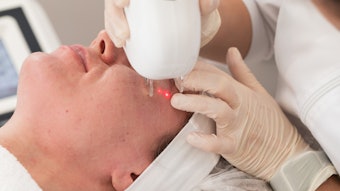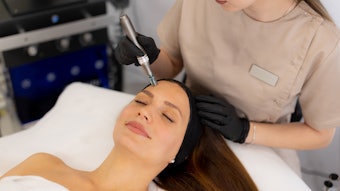
Abstract: When people with mental or emotional disorders seek out cosmetic surgery to help remedy their problems, it can spell trouble for a physician and his practice. Knowing what traits to look for in a person unsuitable for surgery, as well as how to deal with patients unhappy with their surgical results, can be done with assessment procedures that aim to help protect physicians from potential legal ordeals.
Recently, a cosmetic surgeon shared this experience that, unfortunately, is not unique. He reported that he performed surgery on a woman who was excessively concerned about her appearance. After the surgery, she was extremely dissatisfied and insisted on a redo. Still unsatisfied, she began harassing the physician and his family. She took out ads in the local papers, created a slanderous blog about him, and threatened his wife and his office staff. This went on for about six months, until tragically the woman committed suicide.
The problematic patient
Research shows that an inordinate amount of people with mental and emotional conditions seek plastic and other elective surgeries. Presumably, individuals who seek cosmetic enhancement want to improve their self-esteem and self-confidence, and a good surgical outcome should improve these domains, as well as result in increased confidence in social situations.
However, as illustrated in the incident cited above, this is not always the case. Some individuals will never be satisfied with a surgical outcome. These insatiable patients return for repeated procedures, seeking relief from extreme body image dissatisfaction. These individuals have a condition known as body dysmorphic disorder (BDD), which is indicated by a preoccupation with an imagined defect and unrealistic expectations about the outcome of surgery.
Patients with BDD perceive imagined physical defects and seek cosmetic procedures to correct them. Because these procedures will not improve the underlying psychological condition, the patient will not be satisfied with even the most successful surgery. In some cases, concern with physical appearance reaches an intensity that causes subjective distress to the individual and leads to the impairment of functioning in social and other domains.1
Recent studies have shown patients with BDD process what they see differently from the normal population. These findings suggest BDD is a neurobiological-based disorder of perception, which may underscore why cosmetic procedures are largely ineffective—and contraindicated—in this population, and why symptoms may worsen post-procedure.2
In addition, patients may exhibit other psychological disorders that often cause undue stress to the physician, including borderline personality disorder, paranoia and narcissism. Individuals with these disorders do not have the ability to self-regulate and often need the attention or adulation of others, especially those in authority. Other disorders, such as depression and anxiety, are not contraindicated for surgery, but they will not necessarily be improved by cosmetic surgery.
According to psychologist Ted Grossbart, PhD, a senior clinical supervisor at the Massachusetts Mental Health Center and the Massachusetts School of Professional Psychology and an assistant clinical professor of psychology at Harvard Medical School, cosmetic surgery patients often look for more than changes in their physical appearance. If these procedures do not lead to improvements in body satisfaction, self-esteem or quality of life, the patient perceives them as a negative surgical outcome.
Patients with BDD, as well as those with other psychological problems, may request repeat procedures or experience depression and adjustment problems, social isolation, family issues and self-destructive behaviors, which can lead to malpractice claims and negative referrals.3 In some cases, the patient may even cause bodily harm to the surgeon or staff, and there are at least four documented cases of surgeons who have been murdered by patients who had symptoms consistent with BDD.4
Research has also shown external factors, such as expectations for improving careers, relationships and life in general, along with dissatisfaction with a previous surgery, as indicative of poor surgical outcomes. If patients regard cosmetic surgery as a life-changing event, they are likely to be upset when physical changes do not lead to the desired social outcome.5
Assess and build rapport
According to studies, a doctor’s failure to create a rapport with the patient is one of the major mistakes leading to legal issues. “A survey of 115 experienced cosmetic surgeons found that nearly one-half had been sued for malpractice. Of this group, 51.6% attributed the suit to lack of rapport (vs. 17% for the next highest cause: unrealistic expectations), and only 14.5% attributed the suit to poor surgical results. Thorough screening of patients is critical to insure that postoperative expectations are met, and can also be vital to identifying the patient who becomes a management problem.”6 Acquiring more knowledge about patients, as well as increasing time spent with them, builds a solid rapport that lessens the frequency of legal action.
Leading experts have identified that, “the challenge for the cosmetic surgeon is having enough time to properly assess the patient, and a 30–45 minute consultation is not enough time to learn about an individual’s psychological makeup. In addition, prospective patients are on their best behavior during the preoperative consultation and will often expend a great deal of effort to present as ‘appropriate’ for surgery.”7
Grossbart and clinical psychologist David Sarwer, PhD, an associate professor of psychology in psychiatry at the University of Pennsylvania Health System, further contend that an assessment by a well-qualified mental health consultant with a good understanding of body image dissatisfaction and BDD is a valuable asset to a cosmetic surgery practice.
However, recognizing that hiring an in-house psychologist is not feasible for every cosmetic medical business, industry experts have worked to develop an assessment tool that extends the surgeon’s reach into the patient’s psyche. This type of assessment and summative report tool provides the surgeon with salient information before the intake visit, facilitating a more in-depth interview process. See Assessment Tools for an example. Presurgical assessments also help build rapport and communicate to the patient that she is being treated as a whole person, rather than as a single medical problem.
Simple steps to a safer practice
As cited above, some patients can be disruptive to the office staff and other patients, even after a concerted effort to establish a rapport. How should you or your staff handle the problematic patient? The following bulleted points include a few suggestions that you can implement as part of your office protocol.
- Take extra time to listen and build rapport. Think of the extra time you spend with each patient as malpractice insurance.
- Follow up on phone calls within 24 hours. Make sure the patient understands the procedure, and address any concerns.
- Be patient. These patients can be annoying because they take an inordinate amount of the staff’s and physician’s time. They tend to feel abandoned easily and will misconstrue impatience as a lack of caring.
- Be careful not to advise the patient, but rather ask questions about what they would like to have happen.
- Document, document, document.
- Implement a special release form documenting that the patient has been informed about a specific mental disorder and has chosen to go ahead with the surgery even though it may be contraindicated.
- Don’t argue with patients or discount their perceived defects. Problematic patients often exhibit unrealistic thought processes, and they won’t agree with you. Instead, talk to them about their dissatisfaction with life in general and refer them to a counselor.
- Talk about unrealistic expectations, and about how the surgery is not a panacea for life’s problems.
- Express empathy and build rapport.
- Set rules and boundaries at the beginning of treatment about office protocol. Include extra consulting fees with problematic patients if necessary. If patients know what to expect, they are less likely to cause a scene or feel abandoned.
Navigating patient relationships can be a rewarding part of your practice. As problems emerge, the physician who takes the time to build rapport and preempt problems will be more likely to avert legal and personal safety issues. A formal assessment tool administered before the intake interview can be an integral part of this important process.
REFERENCES
1. R Honigman, K Phillips and DJ Castle, A review of psychosocial outcomes for patients seeking cosmetic surgery, Plastic and Reconstructive Surgery, 113 1229–1237 (2004)
2. J Feusner and A Winograd, Visual information processing of faces in body dysmorphic disorder, American Association of Plastic Surgeons 2009 Annual Meeting (2009)
3. RL Goode, The unhappy patient following facial plastic surgery: what to do? Facial Plastic Surgery Clinics of North America, 1612 183 (2008)
4. M Gorney, “Professional and legal considerations in cosmetic surgery.” Psychological Aspects of Reconstructive and Cosmetic Plastic Surgery: Clinical, Empirical and Ethical Perspectives, Lippincott Williams & Wilkins, Philadelphia, 315–327 (2006)
5. K Phillipa, JE Grant, J Sinischalchi and RS Albertini, Surgical and non-psychiatric medical treatment of patients with body dysmorphic disorder, Psychosomatics, 42(6) 504–510 (2001)
6. DJ Hodgkinson, Identifying the body-dysmorphic patient in aesthetic surgery, Aesthetic Plastic Surgery, 29 503–509 (2005)
7. TA Grossbart and DB Sarwer, Psychological issues and their relevance to the cosmetic surgery patient, Seminars in Cutaneous Medicine and Surgery, 22(2) 136–147 (2003)










